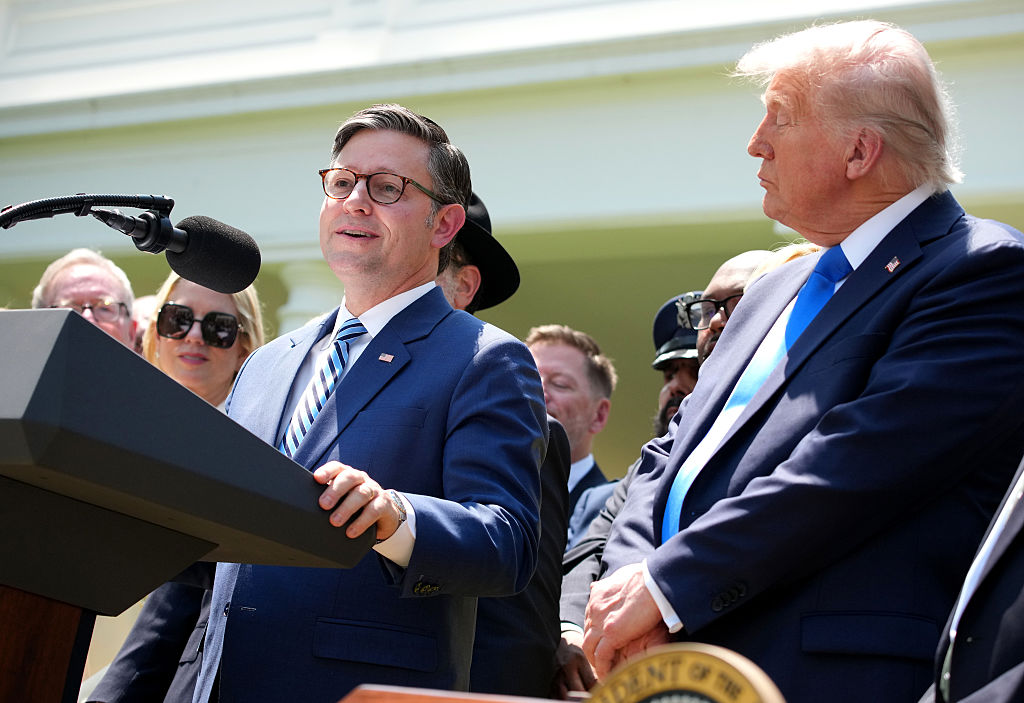President Donald Trump’s “big, beautiful” tax-and-spending bill could come with a big, ugly cost, economists warn.
Nonpartisan research groups studying the proposal have estimated that it would add more than $2.5 trillion to the federal debt—currently at an all-time high of $36.8 trillion—over the next decade.
[time-brightcove not-tgx=”true”]
Despite those projections, White House Press Secretary Karoline Leavitt on Monday insisted that the bill would actually save the federal government $1.6 trillion: “This bill does not add to the deficit,” she told reporters. “It is the largest savings for any legislation that has ever passed Capitol Hill in our nation’s history.”
The White House and the Office of Management and Budget did not respond to a request for comment on how that $1.6 trillion figure was calculated.
Fiscal watchdogs have sharply disputed such claims, citing the bill’s steep tax cuts—estimated at $3.8 trillion—and relatively modest spending reductions. The nonpartisan Committee for a Responsible Federal Budget estimates that the House bill in its current form will increase debt by $3.3 trillion through 2034, and increase annual deficits to $2.9 trillion to $3.3 trillion.
Deficits are high on the minds of a handful of Republican fiscal hawks in Congress whose wariness over the bill’s spending could doom it. Trump’s 2017 tax cuts are set to expire at the end of the year, and simply extending them would cost $4.6 trillion over a decade, according to the Congressional Budget Office. The Republican bill also reduces taxes on tips and overtime, and increases spending on the military and border security. Republicans plan to offset that spending in part by cuts to Medicaid, food stamps, and federal subsidies for clean energy projects.
Republican leaders have struggled to strike the right balance of lowering the bill’s price tag while not losing support from moderates who are wary of cutting too much from widely used safety-net programs. Trump is expected to attend the House Republicans’ conference meeting at the Capitol on Tuesday to shore up support for the bill.
The bill’s cost-saving measures include work requirements for Medicaid recipients, a reduction in nutrition assistance, and tighter eligibility for undocumented migrants to access federal benefits. Critics argue that these reductions disproportionately impact low-income Americans. “The structure of this bill is such that low- and middle-income households bear the brunt, while the wealthy reap significant benefits,” Daniel Hornung, a former Deputy Director of the National Economic Council under President Joe Biden, tells TIME.
He adds that “there’s really no way to look at this where deficits are lower because of this bill.”
Debate over the measure’s final cost has exposed rifts within the Republican Party. Fiscal conservatives argue that the bill’s spending reductions are too modest and that the promised savings are illusory. “We can and must do better before we pass the final product,” Texas Rep. Chip Roy wrote on social media late Sunday, after the House Budget Committee narrowly advanced the bill in a 17-16 vote—with four deficit hawks voting “present” so the measure could advance. Five Republican fiscal hawks on the committee had joined with all Democrats in voting against the bill last Friday.
House Speaker Mike Johnson and his leadership team spent the weekend in frantic negotiations before passing the bill out of the Budget committee on Sunday. The bill could reach the House floor as early as this week, as Johnson has pledged to bring the bill to a vote before Memorial Day. After that, it would go to the Senate, where Republicans have their own concerns and, like in the House, Republicans will need the support of virtually all of their caucus.
“The One Big Beautiful Bill will almost certainly add to our deficits and debt,” Republican Sen. Ron Johnson of Wisconsin wrote in a recent Wall Street Journal op-ed. “I can’t imagine that they want Republicans to increase annual deficits. That’s why I can’t support this bill as it’s currently being discussed and doubt that it will pass the Senate.”
Economists warn that the bill’s impact on the deficit could be even more severe than current projections, given that the bill puts end dates on some tax cuts to keep the cost lower. Congress has a long history of ultimately extending temporary tax cuts beyond their expiration dates. The Committee for a Responsible Federal Budget has estimated that extending the bill’s tax cuts for a full decade could push the total increase in the deficit to as high as $5.3 trillion.
Fiscal hawks in Congress aren’t the only ones concerned about deficits. Moody’s Ratings recently downgraded the U.S.’s AAA rating, citing doubts about the country’s ability to maintain fiscal discipline. The bill’s passage could further pressure U.S. bond yields, which have already climbed above 5%, signaling growing investor anxiety over American debt.
House Republicans have insisted that the bill will stimulate economic growth, which they argue will generate enough revenue to offset the increased debt. Jason Smith, chairman of the tax-writing House Ways and Means Committee, said the economy would “go gangbusters” under Trump’s tax and regulatory agenda.

